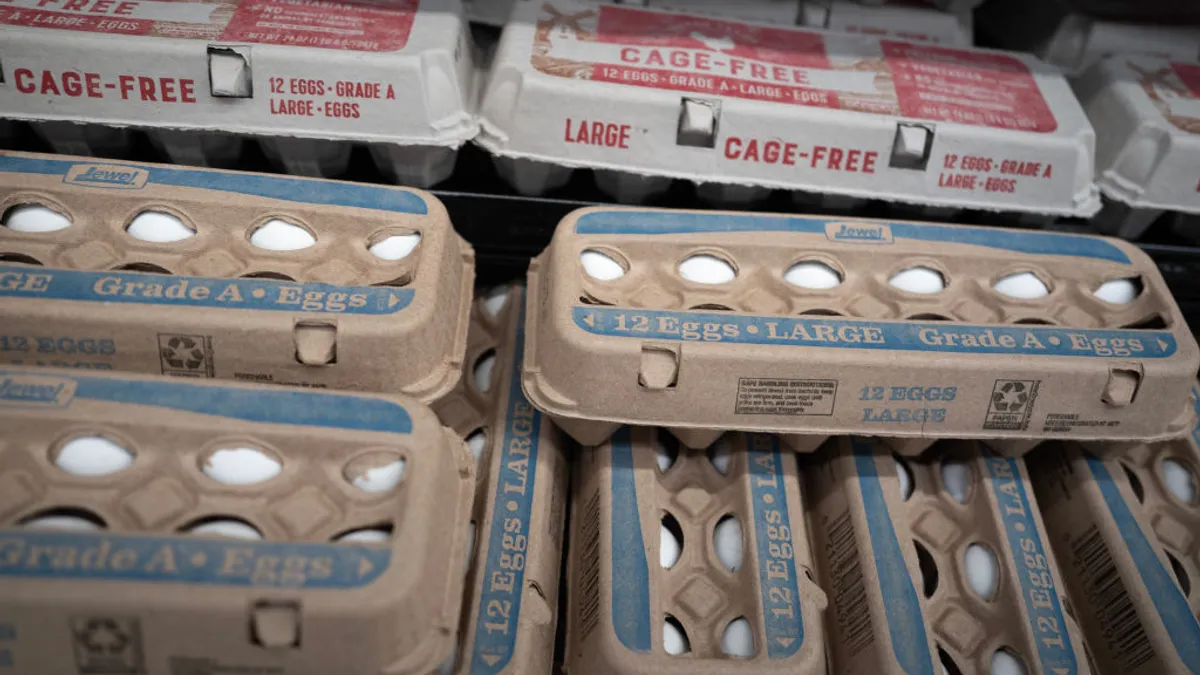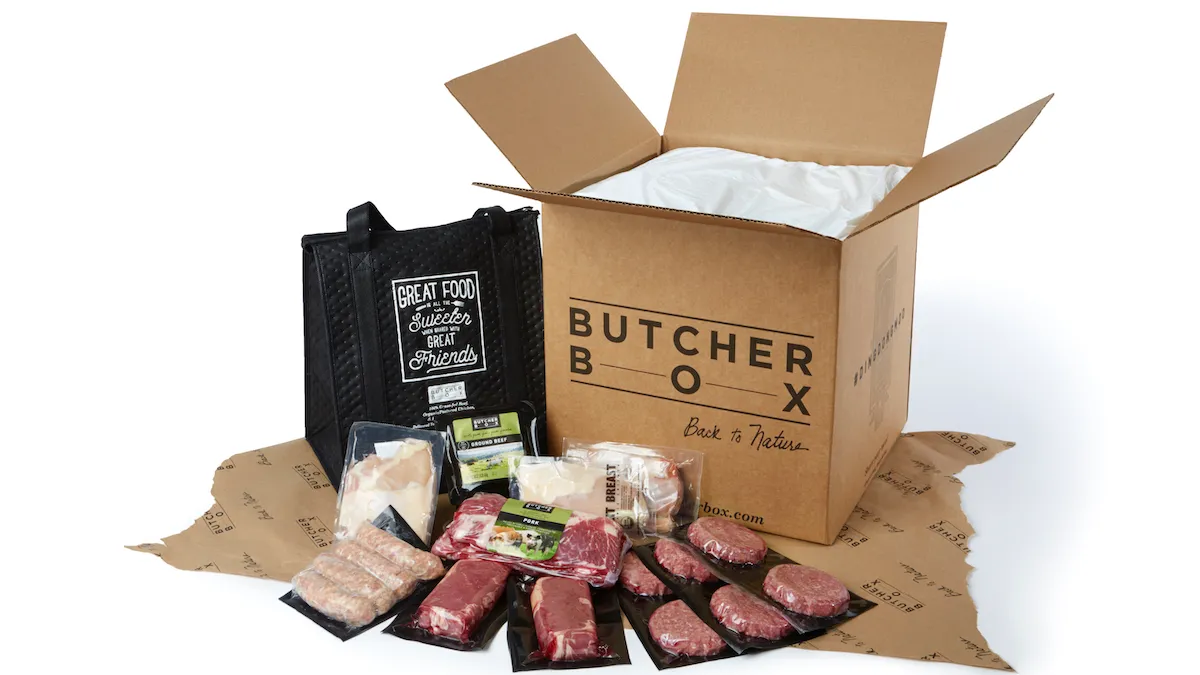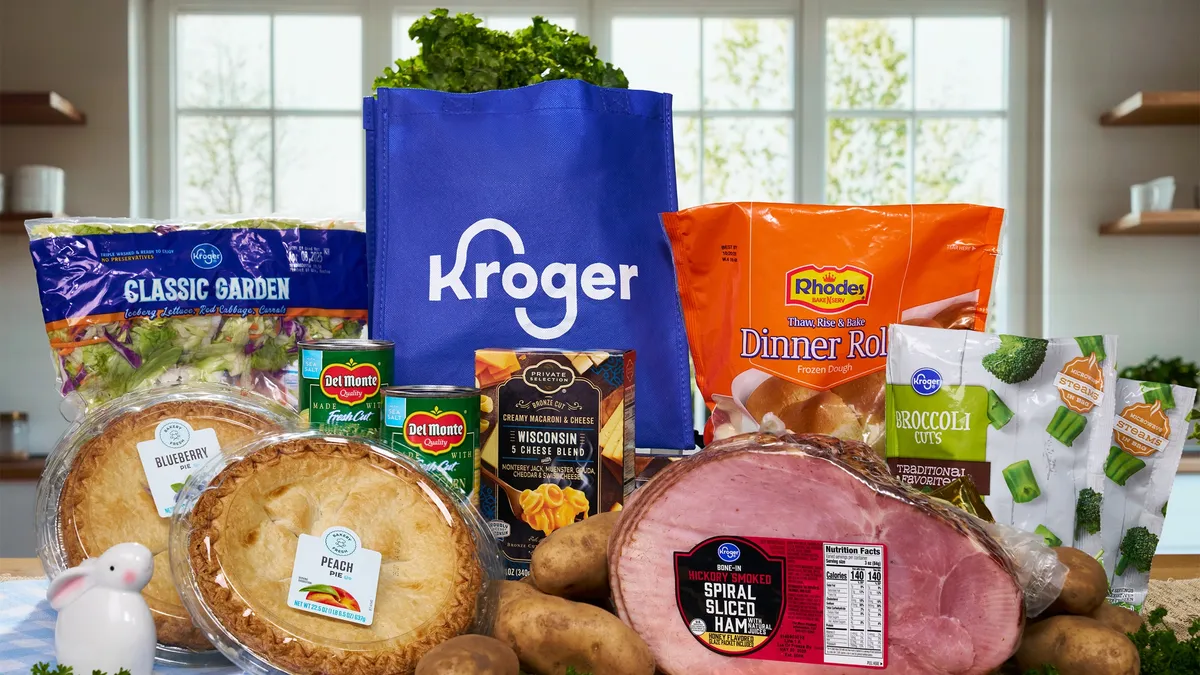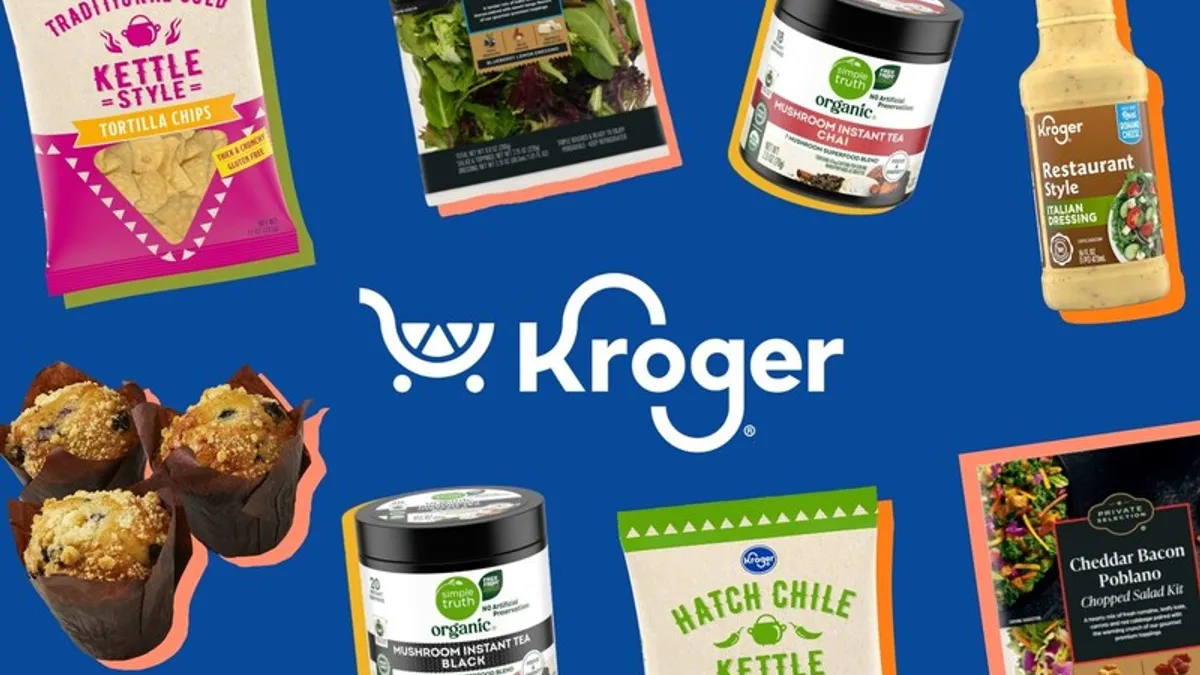Last year proved to be a year of significant growth across the board for meat sales, as nearly all (96%) surveyed shoppers said they are open to spending more on meat and poultry, especially during special occasions and holidays, according to FMI — The Food Association’s latest Power of Meat report.
While price remains the primary decision driver of meat purchases, grocers can work around this by highlighting quality, in-store experiences and nutritional or production claims that also play a key role in meat purchasing decisions, according to the report.
Growing customer interest in the meat department, primarily around time-saving meal solutions, underscores that there is plenty of potential for innovation and marketing in this area, particularly in “value-added and deli-prepared meat and poultry,” FMI said.
Here’s a breakdown of how meat sales performed throughout 2024 and how grocers are making their butcher offerings stand out.
 Data insights
Data insights
Meat department sales climbed to a record $104.6 billion last year, making meat the largest of the perimeter departments, according to FMI’s report. Meat and poultry sales saw growth in terms of dollars, units and volume.
An uptick in trips played a significant role in this growth as more U.S. consumers purchased meat more than once a week in 2024 than the year before.
Fresh meat outperformed processed meat sales last year and stood out with “above-average gains,” FMI said. Both meat categories also saw a shift to larger packages.
Fresh meat sales powered ahead last year
The top meat shoppers by demographic include older consumers, higher-income shoppers and households with children, according to the report, who all index above average.
 Stand out grocers
Stand out grocers
Meaty foodservice options
Last year, SpartanNash began the revamp of its Family Fare grocery chain, which included expanding its foodservice offerings.
When the Family Fare in Holland, Michigan, debuted its remodeled interior in August, the improved store included an expanded hot-and-ready meals section with a focus on proteins like flank steak and chicken as well as fried sandwich options.
The store also highlights easy meal solutions that cost around $20 and take just 20 minutes to cook.
FMI’s report suggests other grocers would benefit from following Family Fare’s path, noting that retailers that showcase the economics of home-prepared meals and offer restaurant-quality food along with convenience can drive customer loyalty as well as purchases. In addition, grocers should look to expand their deli-prepared meat assortment beyond rotisserie and fried chicken.

Beefing up quality standards
Long praised for its meal offerings, Whole Foods Market also underscores value in its meat department through its emphasis on humane standards for how animals are raised and its focus on sustainability.
In June, Whole Foods broadened quality standards for its meat products in an effort to improve accountability and transparency by increasing the number of approved third-party animal welfare programs that certify products.
These updated quality standards also expanded to new species not previously covered under Whole Foods’ animal welfare policy, including bison, veal, venison, duck, goose and quail in addition to frozen, smoked, cooked and cured meat products. This move ultimately allows the grocer to expand its assortment of meat products.
By next year, Whole Foods shoppers will be able to identify a product that is animal welfare-certified with a seal or logo on packaging, shelf strips or scale tags across its meat department, according to the grocer.
While most consumers trust that their grocery stores sell meat from humanely raised animals, FMI’s report stated there is a “lack of clarity” for some consumers — making way for an opportunity for grocers to better advertise their production and sourcing processes.
“When welfare is a deciding factor in the meat and poultry purchase, shoppers tend to choose meat/poultry with specific claims, which experienced strong sales growth in 2024,” according to the report. “Providing transparency and thus reassurance about sourcing and animal welfare could boost meat purchases.

 Making the most
Making the most
Catalyst for wellness
Health is becoming more important to shoppers and is also an area where grocers continue to work to better meet shoppers’ needs.
However, meat can easily be overlooked when aiming to bolster health and wellness efforts.
The percentage of consumers aiming to eat less meat (22%) is at its lowest point in many years, according to FMI, meaning there is an opportunity for grocers to focus on protein attributes when trying to reach health-conscious consumers.
FMI suggests that more grocers integrate protein messaging in meat and poultry marketing, whether on product packaging or in-store signage. Grocers can also create messaging that ties protein to exercise, gym visits, muscle development and overall health.
Seventy-four percent of consumers believe meat and poultry belong in a balanced lifestyle — and this does not include plant-based meats, which saw a decline of 6.7% in dollar sales, according to Circana data cited by FMI. That category also saw declines in units and pounds, FMI noted.
Meat, drink and be merry with new recipes
Shoppers want to cook, and while meat and poultry cooking confidence remains steady, according to FMI, many are still hesitant in the kitchen.
The report found that top areas of interest for new recipes include comfort meals, quick prep options and creative ways to cook with basic ingredients like chicken and ground beef.
Of the four generations FMI surveyed, millennials seek out time-saving recipes that offer convenience the most. To help drive meat purchases from these consumers, grocers should look to not only offer fast-prep meal solutions, but also incorporate value-added flavors and mimic restaurant quality, the trade group suggested.
Even more innovation is still possible, though, as more than half (58%) of consumers are open to trying new cuts of meat — the only thing stopping them from experimenting more is a lack of confidence. New recipes as well as newer technologies present an opportunity to engage shoppers, according to FMI.
Education is key as shoppers seek advice when trying out new recipes and working with new cuts of meat. “As such, a focus on information and education is likely to pay off for all stores through shoppers’ enhanced confidence to buy across species and cuts and, as a result, preparing meat more frequently,” the report stated.





















